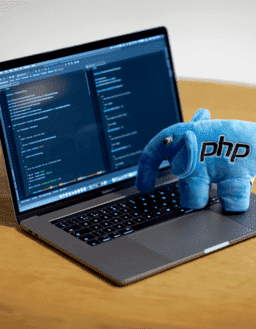
A software application’s launch is a moment of achievement. It is the outcome of countless hours dedicated to its development, testing, and enhancement. A successful launch signifies the conclusion of one voyage, but it also initiates the operational lifecycle, which may be more critical. The long-term value and utility of a software product are frequently determined by the events that transpire following its release.
There are many distinct and occasionally unforeseen difficulties throughout this post-launch phase. These can range from performance degradation and technological problems to evolving user requirements and integration difficulties. Companies run the risk of losing the momentum and value they have diligently built if they solely concentrate on the first deployment without planning for the next stage.
This article examines the main issues that show up following the release of a software product and offers helpful solutions. The purpose is to help organizations, especially those in the US, make sure that their software stays stable, effective, and focused on the user long after it initially goes live.
Navigating the Post-Launch Operational Phase
The duties and priorities change as soon as the software shifts from development to use. Instead of prioritizing the addition of new features or the achievement of delivery deadlines, the emphasis is shifted to the maintenance of system health, the resolution of user issues, and the accommodation of change.
Under this phase, the focus of software development shifts from the construction of software to the optimization of it. Guaranteeing that your custom software operates consistently in real-world scenarios is the objective. The primary focus is on future adaptability, user contentment, and performance. Companies must realize that launch is just a fresh beginning, when ongoing progress becomes strategically necessary, and it is not the end goal.
Core Post-Launch Challenges and Mitigation Frameworks
Performance Degradation and Scalability Constraints
One of the most typical problems that comes up after deployment is a drop in performance. When faced with real-world traffic, unexpected data volume growth, or ineffective backend procedures, a software that functioned flawlessly during testing may break down. Users may get frustrated when their systems slow down or crash, and this can hurt the brand’s reputation.
Businesses need to do performance testing all the time, not just once before a product is released, to fight this. This involves doing stress testing, load tests, and scalability tests that are like how people would really use the system. Using strong monitoring systems makes it possible to see important metrics like response times and server loads in real time.
It’s also important to plan for infrastructure in advance. Businesses can make their custom software ready to grow as needed by using cloud-based scalability or a microservices design. To keep hidden bottlenecks from becoming big problems, every software development cycle should include regular code profiling and optimization.
Unforeseen Bugs and Technical Anomalies
Despite thorough testing, certain live conditions inevitably lead to problems to appear. These irregularities might not be noticed during quality control and only become apparent when the product is put into use and impacts users.
Centralized logging and monitoring systems should be put in place to find problems early on in order to fix this. Setting up agile patch management and continuous deployment pipelines that let developers swiftly release hotfixes and upgrades is just as crucial.
It is crucial to promote user input and establish clear avenues for bug reports. Businesses can make sure that problems are fixed before they get worse by having a support and maintenance crew that is always available. Hiring a trustworthy software development company that includes post-launch support as part of its software development services can make a big difference in how you deal with these problems that come up out of nowhere.
Evolving User Needs and Feature Evolution
Software that doesn’t evolve becomes obsolete. Users’ needs change, industry trends shift, and competitors raise the bar with new innovations. Failing to keep up can mean losing user interest.
To remain relevant, developers must establish continuous feedback loops through user surveys, analytics, and stakeholder interviews. This data helps identify which features are working, what’s missing, and what could be improved.
Adopting iterative development practices such as Agile or Scrum allows for frequent updates and enhancements. Maintaining a structured process for evaluating and prioritizing feature requests ensures that development efforts align with business goals and user expectations. Leading custom software development companies offer long-term strategic planning as part of their custom software development services, helping clients keep their products future-ready.
Emerging Security Vulnerabilities and Threats
Security is an ever-present concern, particularly after launch. As new threats emerge and attackers become more sophisticated, your custom software becomes a potential target for exploitation.
Regular security audits, code reviews, and penetration tests are necessary to identify vulnerabilities before malicious actors do. All dependencies and frameworks must be updated frequently, and security patches should be applied on a strict schedule.
Team education is also essential. Developers and operators must follow secure coding practices and stay informed about the latest risks. Partnering with a software development company that specializes in secure software services adds a crucial layer of protection to your operations.
Integration Complexities and Compatibility Issues
Modern software rarely operates in isolation. Most applications rely on third-party APIs, external databases, or integrations with other platforms. When those external systems change, or when your app is updated, compatibility issues can arise.
Mitigating this risk requires detailed and up-to-date documentation for all integrations. Backward compatibility should be a priority during updates. Additionally, having a separate environment for integration testing ensures that updates won’t break critical connections.
A structured integration plan supported by experienced custom software development partners can reduce the complexity and ensure seamless connectivity with external systems.
Accumulation of Technical Debt
During the rush to launch, developers may take shortcuts that lead to fragile code. Over time, this “technical debt” can make the application harder to maintain and scale. It becomes a hidden cost that grows with every new update.
The key to managing technical debt is prevention and regular attention. Set aside time in every sprint for refactoring. Enforce clean, maintainable coding standards. Utilize modern software development tools to analyze code quality and highlight areas that need improvement.
Businesses that take a long-term view of their software development process will build more maintainable, scalable, and reliable products.
The Strategic Advantage of Professional Development Partnerships
It can be taxing for a team to manage all of these post-launch duties internally, particularly if the same team has recently finished a rigorous development cycle. Working with well-known custom software development companies can help you get organized and focused.
These businesses have extensive knowledge of developing and maintaining software products. Their areas of competence include continuous delivery, security, integration, and performance testing. Most significantly, they let your internal teams focus on the most crucial business goals.
A reliable software development company can find problems before they happen, propose ways to make things better, and help you plan your long-term goals. With the right custom software development services, you have a partner who stays with your program and doesn’t leave once it launches.
Proactive Strategies for Sustained Software Success
Software products with a strategy that extends beyond deployment are the most effective.
Continuous Monitoring and Analytics
Real-time monitoring and analytics shed light on possible problems, app performance, and user behavior. This information is crucial for directing future advancements.
Regular Maintenance and Updates
Avoid holding out for things to break. Plan regular maintenance that includes security patches, minor bug fixes, and other improvements that increase stability and usability.
Strategic Roadmap Planning
Develop an upcoming plan that details upcoming system enhancements, integrations, and features. Planning a roadmap should involve both developers and business stakeholders to guarantee goal consistency.
Culture of Continuous Improvement
Promote a mindset that values feedback from users, trying new things, and making changes on a frequent basis. To remain current, your custom software should constantly be evolving.
Investing in Robust Software Development Tools
By automating, testing, deploying, and monitoring processes, contemporary software development tools simplify operations. Software quality can be enhanced, and manual overhead can be greatly decreased with these tools.
Conclusion
A software launch is just the beginning of a dynamic, ever-evolving journey. The true value of the software is determined by what occurs after deployment. Better performance, longer user retention, and a larger return on investment are all expected for companies that foresee and clearly handle post-launch issues.
Through a commitment to ongoing enhancement, collaboration with knowledgeable partners in custom software development, and utilization of efficient software development services, businesses can transform operational challenges into chances for expansion.
Software development success is more than just putting out a product and going on. Building something that can grow, change, and prosper throughout time is the goal. That is the real test and reward of software that has been custom-built.
Frequently Asked Questions
- How can Maxsource Technologies help with post-launch support?
We offer dedicated post-launch support services, including bug fixes, performance optimization, feature scaling, and proactive monitoring, ensuring your software remains stable and evolves with user needs.
- Why is regular maintenance critical after launch?
Software needs continuous updates to fix security vulnerabilities, improve speed, and adapt to changing market demands. Without maintenance, user retention and performance can decline quickly.
- Can we scale our development team post-launch without hiring in-house?
Yes. Maxsource provides remote, pre-vetted developers and support teams that can be scaled up or down based on your post-launch roadmap, no long-term hiring needed.
- How do I prioritize features or fixes after launch?
Start with user feedback, critical bug reports, and performance data. We help clients analyze these insights to build structured post-launch plans, balancing fixes, updates, and new features.








































